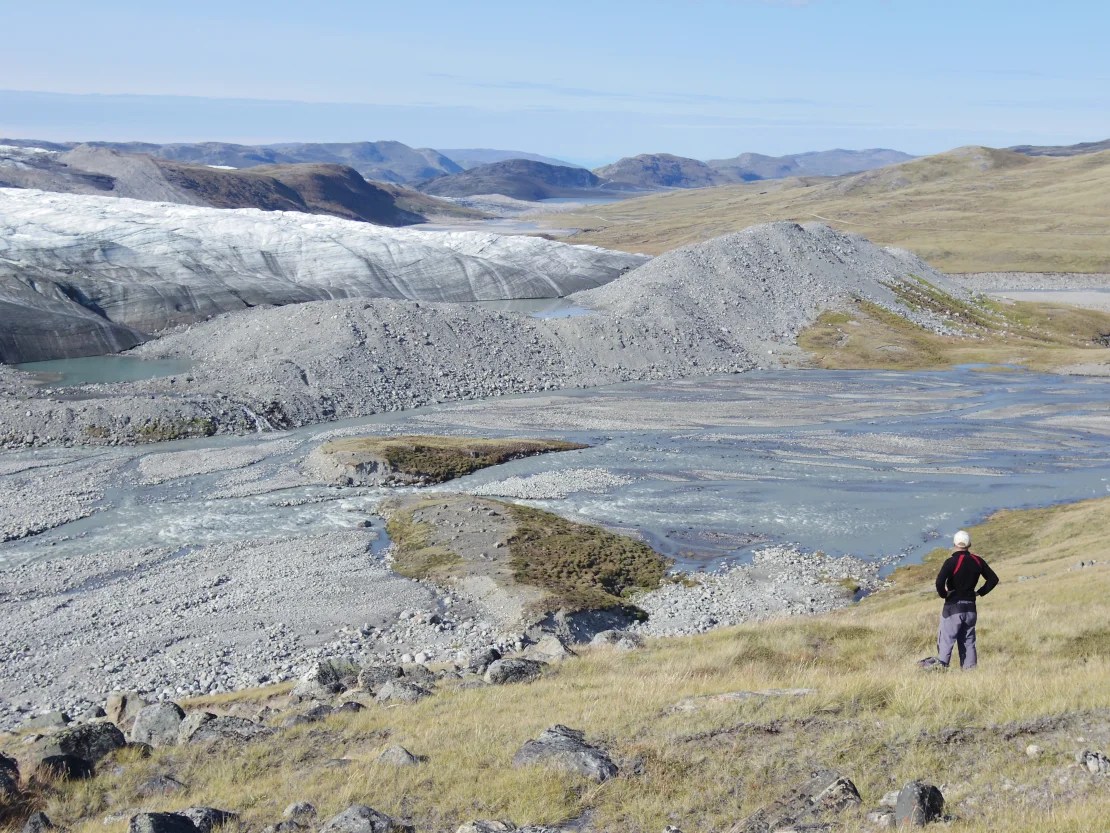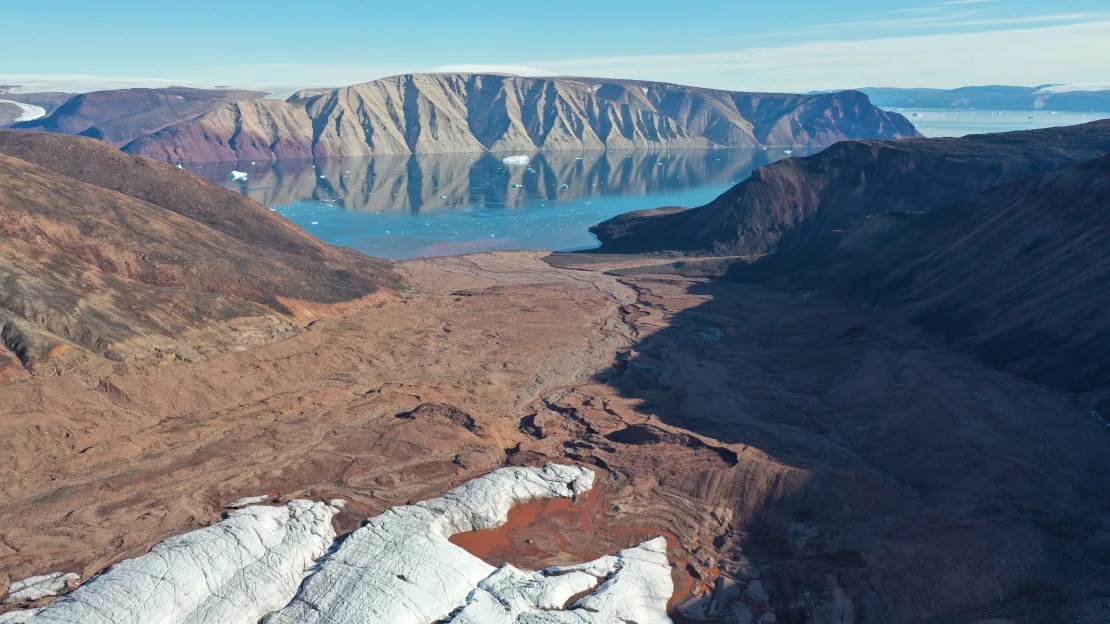(CNN) — region green land The area that has lost ice in the past three decades is about 36 times the size of New York City, land that is rapidly giving way to wetlands and shrublands, a study published Tuesday showed.
The amount of vegetation in Greenland doubled between the mid-1980s and the mid-2000s, as areas of the country previously covered in ice and snow turned into barren rock, wetlands or jungle areas. Wetlands alone quadrupled in that period.
By analyzing satellite images, scientists found that Greenland lost 28,707 square kilometers of ice over three decades, and warned of a series of impacts that could have dire consequences on climate change and rising sea levels.

Russell Glacier, near Kangerlussuaq, West Greenland. Wetlands and jungle areas grow where there was previously ice and snow. (Credit: Jonathan Karivick/University of Leeds)

A view of Bowdoin Fjord in Qaanaaq, northwest Greenland. The loss of ice has exposed barren rock in some parts of the country. (Credit: Mark Smith/University of Leeds)
Rising air temperatures have led to ice loss, which in turn has raised the Earth's temperature. This has caused the permafrost, a frozen layer just below the Earth's surface found in much of the Arctic, to melt. This melting releases carbon dioxide and methane that heat the planet, contributing to global warming. Melting permafrost also causes terrain instability, which can affect infrastructure and buildings.
“We have seen signs that ice loss is triggering other feedbacks that will lead to further ice loss and further 'greening' of Greenland, as shrinking ice exposes bare rock that is then colonized by tundra.” Finally, by shrubs, Jonathan Karivik, one of the report's authors, said in a press release: “At the same time, water released by the melting ice displaces sediments and silt, ultimately leading to the formation of wetlands and swamps.”
Loss of ice creates what is known as a feedback loop. Snow and ice often reflect the sun's energy back into space, preventing excessive warming in some parts of the Earth. But as the ice disappears, those areas absorb more solar energy, raising Earth's surface temperatures, which could lead to more ice melt and other negative effects.
Melting ice also increases the amount of water in lakes, as water absorbs more heat than snow, which increases Earth's surface temperatures.

Brown deposits on melting ice near Kangerlussuaq in Greenland. The rapid melting of the ice is having a number of impacts on Greenland's landscape, including the deposition of its waters. (Image source: Martin Zwick/REDA&CO/Universal Images Group/Getty Images)
Greenland has warmed at twice the global average since the 1970s, and the study's authors warn that even more extreme temperatures are likely in the future.
Greenland is the largest island in the world and is mostly covered in ice and glaciers. About 57,000 people live in the country, and it is an autonomous state within the Kingdom of Denmark. A large portion of the population is indigenous and many of its residents depend on natural ecosystems for survival.
Michael Grimes, the report's lead author, said the influx of sediment and nutrients into coastal waters is a particular problem for indigenous communities that depend on fishing, as well as fishermen elsewhere on the island.
“These changes are critical, especially for indigenous people whose traditional subsistence hunting practices depend on the stability of these sensitive ecosystems,” he said.
“In addition, the loss of Greenland's ice mass is contributing significantly to sea level rise worldwide, a trend that poses significant challenges both now and in the future.”






More Stories
Nicaragua picks up and delivers to El Salvador four subjects circulated by Interpol
UN experts have warned of serious human rights violations in the context of the presidential elections scheduled for July 28 in Venezuela.
The Organization of American States deploys observers for the US elections